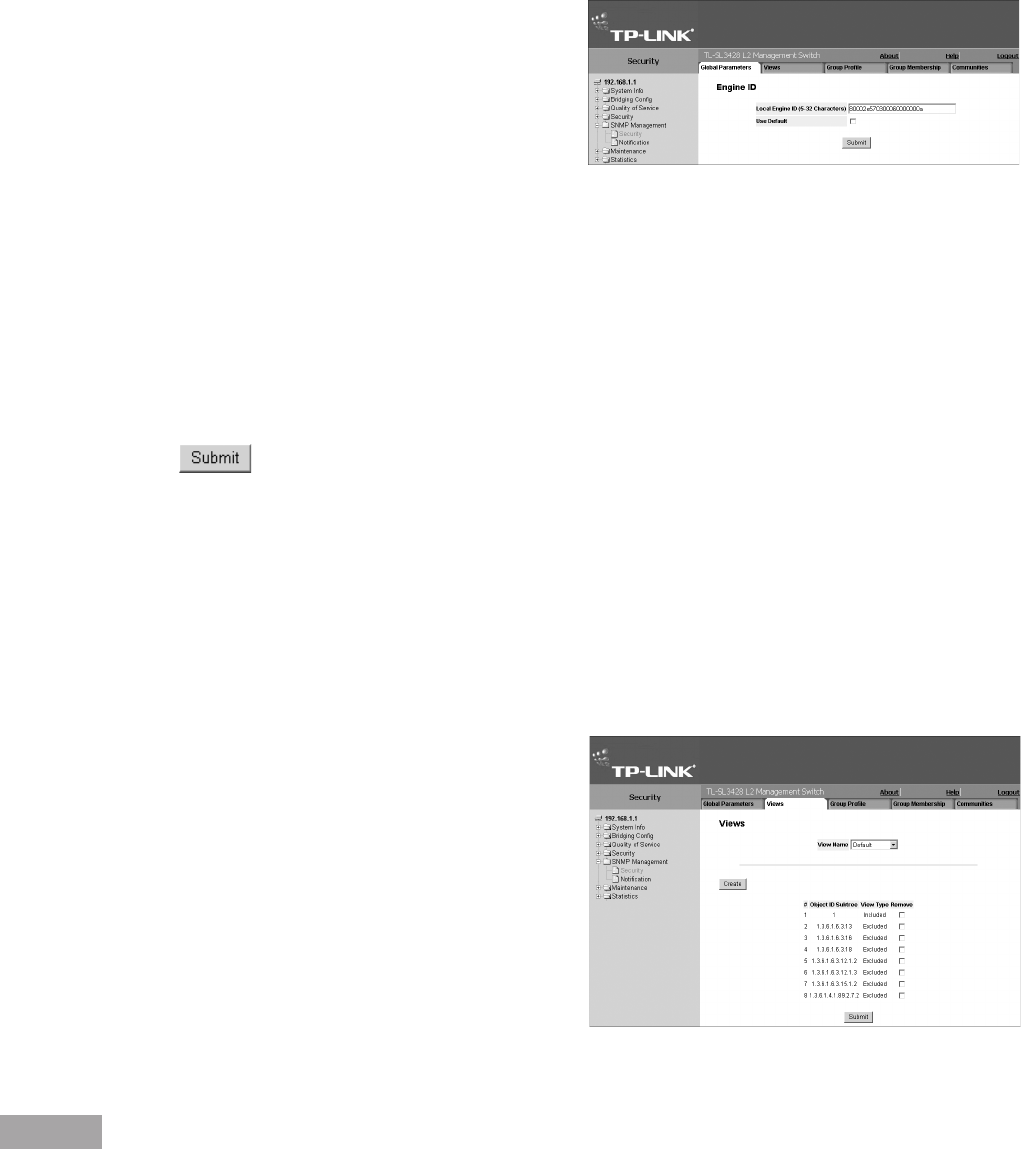
70
71
Dening SNMP Group Members
Dening SNMP Communities
11.3.1 Dening SNMP Global Parameters
The SNMP Security Global Parameters Page permits the enabling of both SNMP and Authentication notications.
To dene SNMP security global parameters:
1. Click System > SNMP Management > Security > Global Parameters. The SNMP Security Global Parameters Page
opens:
Figure 100: SNMP Security Global Parameters Page
The SNMP Security Global Parameters Page contains the
following elds:
Local Engine ID (0-32 Characters) — Displays the
local device Engine ID. The eld value is a hexadecimal
string. Each byte in hexadecimal character strings
is two hexadecimal digits. Each byte can be separated by a period or a colon. The Engine ID must be dened before
SNMPv3 is enabled. Select a default Engine ID that is comprised of an Enterprise number and the default MAC address.
Use Default — Uses the device-generated Engine ID. The default Engine ID is based on the device MAC address and
is dened per standard as:
– First 4 octets — rst bit = 1, the rest is IANA Enterprise number.
– Fifth octet — Set to 3 to indicate the MAC address that follows.
– Last 6 octets — MAC address of the device.
2. Dene the Local Engine ID and Use Default elds.
3. Click . The SNMP global security parameters are set, and the device is updated.
11.3.2 Dening SNMP Views
SNMP Insert space views provide or block access to device features or portions of features. For example, a view can be
dened which provides that SNMP group A has Read Only (R/O) access to Multicast groups, while SNMP group B has
Read-Write (R/W) access to Multicast groups. Feature access is granted via the MIB name or MIB Object ID.
To dene SNMP views:
1. Click System > SNMP Management > Security > Views. The SNMP Security Views Page opens:
Figure 101: SNMP Security Views Page
The SNMP Security Views Page contains the following
elds:
View Name — Displays the user-defined views. The
view name can contain a maximum of 30 alphanumeric
characters.
Object ID Subtree — Displays the device feature OID
included in or excluded from the selected SNMP view.
View Type — Indicates whether the defined OID
branch will be included in or excluded from the selected


















